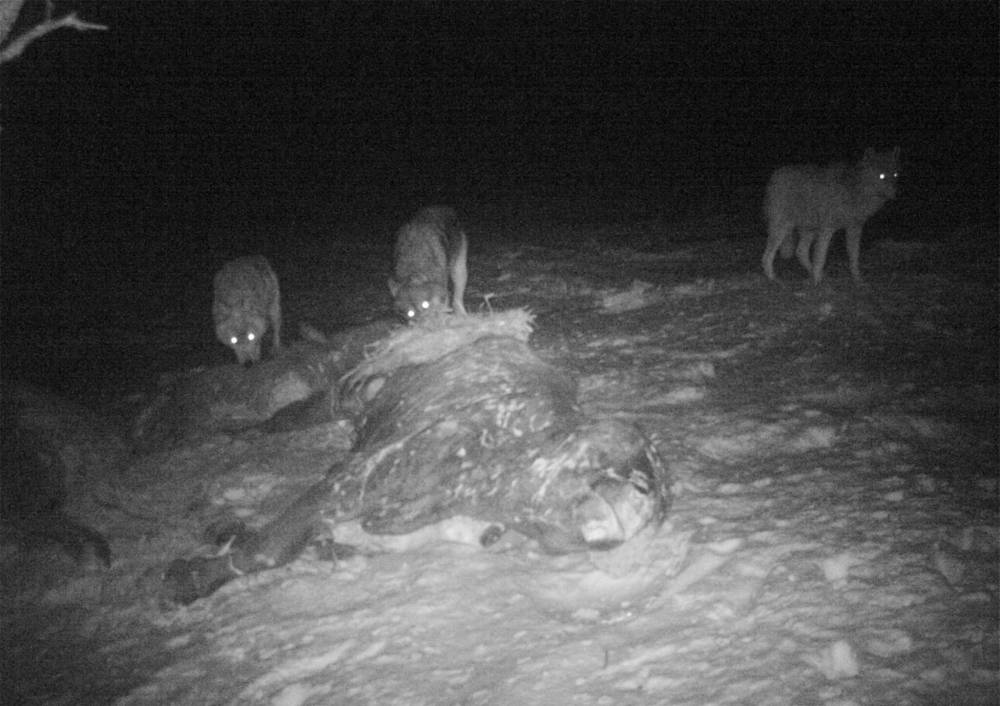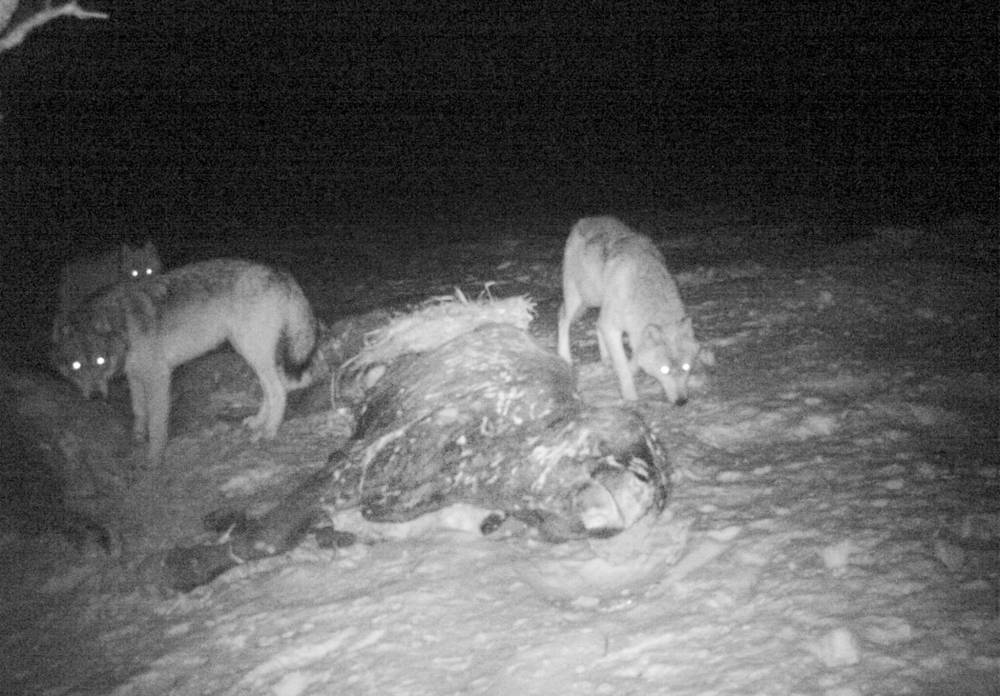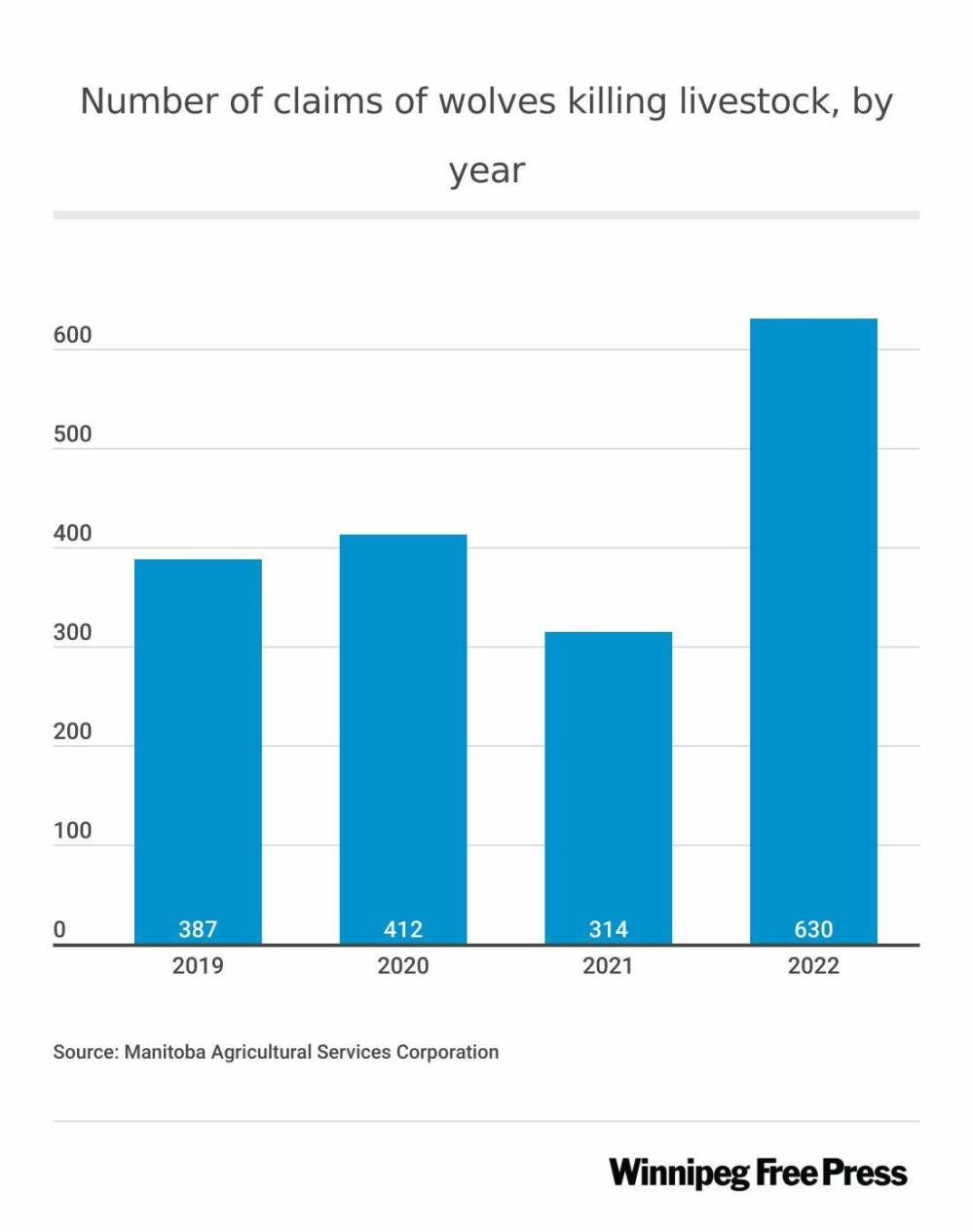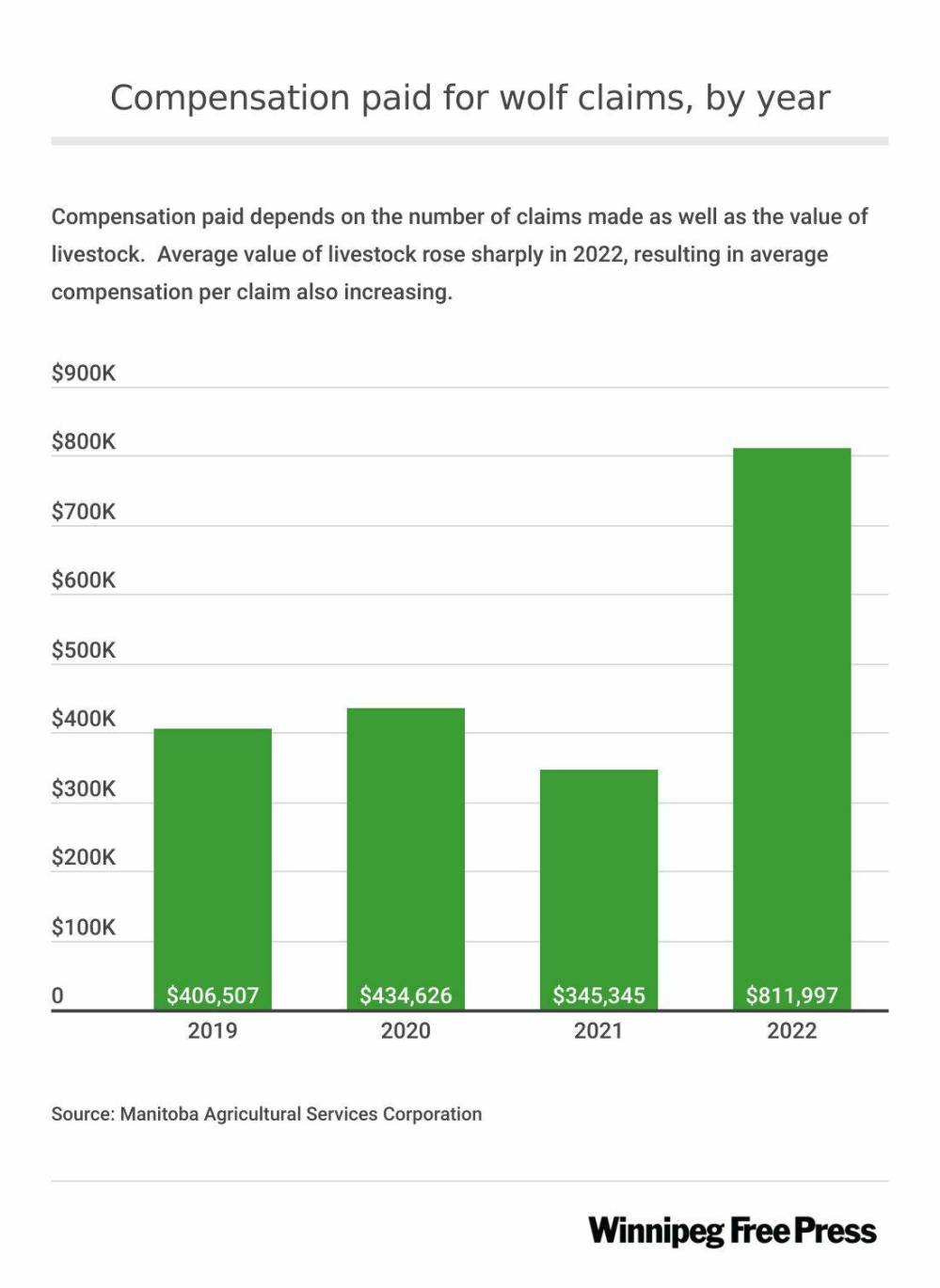Wolf attacks on livestock a problem for farmers
Industry and government search for mitigation strategies
Advertisement
Read this article for free:
or
Already have an account? Log in here »
To continue reading, please subscribe:
Monthly Digital Subscription
$1 per week for 24 weeks*
- Enjoy unlimited reading on winnipegfreepress.com
- Read the E-Edition, our digital replica newspaper
- Access News Break, our award-winning app
- Play interactive puzzles
*Billed as $4.00 plus GST every four weeks. After 24 weeks, price increases to the regular rate of $19.00 plus GST every four weeks. Offer available to new and qualified returning subscribers only. Cancel any time.
Monthly Digital Subscription
$4.75/week*
- Enjoy unlimited reading on winnipegfreepress.com
- Read the E-Edition, our digital replica newspaper
- Access News Break, our award-winning app
- Play interactive puzzles
*Billed as $19 plus GST every four weeks. Cancel any time.
To continue reading, please subscribe:
Add Free Press access to your Brandon Sun subscription for only an additional
$1 for the first 4 weeks*
*Your next subscription payment will increase by $1.00 and you will be charged $16.99 plus GST for four weeks. After four weeks, your payment will increase to $23.99 plus GST every four weeks.
Read unlimited articles for free today:
or
Already have an account? Log in here »
Hey there, time traveller!
This article was published 13/06/2023 (870 days ago), so information in it may no longer be current.
Farmers are increasingly reporting wolf attacks on their animals as industry and government search for mitigation strategies.
Carla and Randy Radford are two to watch their cow herd dwindle.
Camera footage shows wolves in the night surrounding a bull at the Radfords’ Roblin ranch. The predators took 17 calves in three weeks, the Radfords said.

SUPPLIED
Camera footage shows wolves in the night surrounding a bull at the Radfords’ Roblin ranch. The predators took 17 calves in three weeks, the Radfords said.
“They’ll consume the whole animal, pull the bones… apart and hawk everything away in one night,” Carla said. “You have no evidence.”
Randy, 65, has lived on the ranch for most of his life. Wolf attacks have become worse in recent years, he noted.
“The rancher is a private person. They don’t want to tell and be loud,” his wife Carla, 57, said. “You have a few losses, you eat it, whatever. But we’ve come to a pinnacle where we’re having to get loud because it’s too big.”
The couple claims they lost 70 calves to wolves last year. Stress on adult cows from wolf attacks has led to fewer calves birthed, and overall, the farm has lost thousands of dollars because of the predators, the Radfords said.
This year, they’ve gotten monetary compensation from government for just two of the 17 calves lost because those were the only carcasses left behind, the Radfords said.
“Their program is a blanket, one-size-fits-all,” Carla said, adding it’s “outdated.”
Manitoba’s wildlife damage compensation program for livestock predation requires producers to have sufficient evidence, like a carcass, to prove farm animals were killed or injured by a predator.
If proven, farmers will receive 90 per cent of their animal’s monetary value from the provincial and federal government.
The Radfords don’t expect an end to their losses until the returning wolves are killed. Non-lethal measures haven’t worked, they said.
“I don’t want to see all the wolves exterminated,” Randy stated. “But we do need the wolves exterminated that are… coming out on our land and taking our income away.”

SUPPLIED
Stress on adult cows from wolf attacks has led to fewer calves birthed, and overall, the farm has lost thousands of dollars because of the predators, the Radfords said.
The province sent a trapper to their ranch Thursday. As of Monday afternoon, no wolf had been caught, and another calf had been injured. Part of its hide had been torn off, but the ranchers can’t legally euthanize it, Carla said.
She’s calling for an update to Manitoba’s wildlife damage compensation program to allow for payment without need of a carcass. After all, her family has plenty of camera footage, she said.
Manitoba Agricultural Services Corporation paid 630 wolf claims through its wildlife damage compensation program last year, more than doubling the 314 of 2021.
The numbers don’t include wolf kills which left no carcass.
The government doled out $811,997 in compensation through wolf claims last year, up from $345,345 in 2021.
“Compensation paid is a factor of the number of claims as well as the value of the livestock,” noted David Van Deynze, MASC’s chief product officer. “The average value of livestock rose sharply in 2022.”
He wasn’t sure why the number of wolf-related compensation claims spiked last year. In 2020, producers made 412 such claims, so 2021 was a slight dip.
Most claims come from farms near parks — Riding Mountain and Duck Mountain — and in the northern Interlake region, Van Deynze said.
“Before compensation is paid… some validation of the loss has to happen, and part of that validation in our mind is seeing a dead animal” Van Deynze said.
The province will send adjustors to determine animals’ causes of death. However, MASC has been hearing from farmers who don’t have a carcass. It’s “struggling to find a resolution,” Van Deynze said.

The provincial government is wrapping up a research project focused on deterring wolves, coyotes and other farm predators. Raymond Bittner, the Manitoba Beef Producers’ predation lead, is among the researchers.
“One thing that’s almost for sure — if you have a wolf problem today, and wolves are killing your livestock, if you don’t have some level of lethal control with those wolves, you may never be able to reduce the problem,” Bittner said.
The research team is trying various mitigation strategies. It began in 2020 and had up to $300,000 of government funding.
A report with findings should be released this winter, Bittner said. The Manitoba Beef Producers’ website will have further information.
“Our suggestion (at Manitoba Beef Producers) is work with your local trappers, try and remove some of the problem wolves,” he said. “We don’t advocate for full wolf removal.”
Wolf kills on farms have increased as the province’s number of trappers has declined, Bittner noted.
Ron Spence, vice-president of the Manitoba Trappers Association, couldn’t give a specific number of trappers in the province but stated there are fewer than decades ago.
The pandemic, a lack of fur buyers in small communities, a lack of access to ship furs to buyers and barriers to getting a trapper’s licence all contribute to the decline, Spence said.
“For me to buy a trapper’s licence, I need to go to Thompson,” said Spence, who lives roughly 90 kilometres away in Nisichawayasihk Cree Nation. “Just imagine these other (northern) communities.”
Two packs of wolves cross his trap line. He leaves them alone and discourages the killing of their species.

“The wolf is a survivor,” Spence said. “More and more of its habitat is slowly taken away… of course they’re going to want to hang around (farmland) until there’s nothing else to eat.”
He encouraged other techniques to remove wolves, like physical barriers between the animals and “proper security.”
Manitoba trappers have caught fewer wolves in recent years, the province’s latest trapping guide shows. Trappers caught an average 302 wolves between 2015-20, down from an average 387 between 2010-15.
Coyotes remain the most prevalent killer of farm animals in Manitoba, according to Van Deynze.
Wolves come second; they made up 28 per cent of claims to the wildlife damage compensation for livestock predation program last year.
gabrielle.piche@winnipegfreepress.com

Gabrielle Piché reports on business for the Free Press. She interned at the Free Press and worked for its sister outlet, Canstar Community News, before entering the business beat in 2021. Read more about Gabrielle.
Every piece of reporting Gabrielle produces is reviewed by an editing team before it is posted online or published in print — part of the Free Press‘s tradition, since 1872, of producing reliable independent journalism. Read more about Free Press’s history and mandate, and learn how our newsroom operates.
Our newsroom depends on a growing audience of readers to power our journalism. If you are not a paid reader, please consider becoming a subscriber.
Our newsroom depends on its audience of readers to power our journalism. Thank you for your support.




